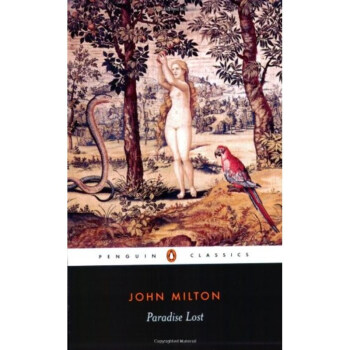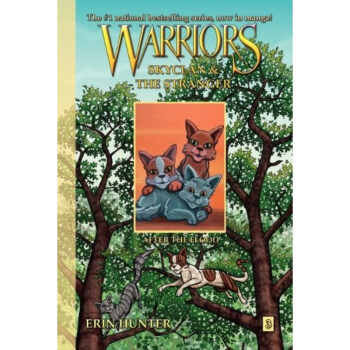![To Sell Is Human The Surprising Truth About Mov [平裝]](https://pic.tinynews.org/19616195/570799dcN268c1922.jpg)

具體描述
內容簡介
#1 New York Times Business Bestseller#1 Wall Street Journal Business Bestseller
#1 Washington Post bestseller
From the bestselling author of Drive and A Whole New Mind comes a surprising--and surprisingly useful--new book that explores the power of selling in our lives.
According to the U.S. Bureau of Labor Statistics, one in nine Americans works in sales. Every day more than fifteen million people earn their keep by persuading someone else to make a purchase.
But dig deeper and a startling truth emerges:
Yes, one in nine Americans works in sales. But so do the other eight.
Whether we’re employees pitching colleagues on a new idea, entrepreneurs enticing funders to invest, or parents and teachers cajoling children to study, we spend our days trying to move others. Like it or not, we’re all in sales now.
To Sell?Is Human offers a fresh look at the art and science of selling. As he did in Drive and A Whole New Mind,?Daniel H. Pink draws on a rich trove of social science for his counterintuitive insights. He reveals the new ABCs of moving others (it's no longer "Always Be Closing"), explains why extraverts don't make the best salespeople, and shows how giving people an "off-ramp" for their actions can matter more than actually changing their minds.
Along the way, Pink describes the six successors to the elevator pitch, the three rules for understanding another's perspective, the five frames that can make your message clearer and more persuasive, and much more. The result is a perceptive and practical book--one that will change how you see the world and transform what you do at work, at school, and at home.
作者簡介
Daniel H. Pink is the author of four books, including the long-running New York Times bestsellers Drive and A Whole New Mind. His books have been translated into thirty-three languages and have sold more than a million copies in the United States alone. Pink lives with his family in Washington, D.C.,,精彩書評
"Full of aha! moments . . . timely, original, throughly engaging, deeply humane."—strategy + business
“A fresh look at the art and science of sales using a mix of social science, survey research and stories.”
—Dan Schawbel, Forbes.com
"Artfully blend(s) anecdotes, insights, and studies from the social sciences into a frothy blend of utility and entertainment."
—Bloomberg?
"Excellent…radical, surprising, and undeniably true."
—Harvard Business Review Blog
“Pink has penned a modern day How to Win Friends and Influence People... To Sell Is Human is chock full of stories, social science, and surprises…All leaders—at least those who want to ‘move’ people—should own this book.”
—Training and Development magazine
"Vastly entertaining and informative."
—Phil Johnson, Forbes.com
"Pink one of our smartest thinkers about the interaction of work, psychology and society."
—Worth
"A roadmap to help the rest of us guide our own pitches."
—Chicago Tribune
“Like discovering your favorite professor in a box…packed with information, reasons to care about his message, how and why to execute his suggestions, and it's all accentuated with meaningful examples… this book deserves a good, long look.”
—Publishers Weekly (starred review)
"An engaging blend of interviews, research and observations by [this] incisive author"
—The Globe and Mail
?
前言/序言
用戶評價
讀完這本書,我有一種強烈的衝動,想要立刻重寫我過去所有提案和郵件的開頭。作者對於“敘事力量”的解讀簡直是教科書級彆的。他沒有僅僅停留在“講故事”這個層麵,而是深入探討瞭故事的結構如何影響大腦對信息的處理速度和記憶深度。我過去總認為,專業性強的領域必須用最精確的術語來錶達,但這本書通過對比展示瞭,即使是最枯燥的技術成果,通過恰當的“框架設置”和“情感錨點”,也能引發聽眾的強烈共鳴。這本書的行文風格非常具有動態感,仿佛作者本人就在你的旁邊,手持白闆,一步步帶領你拆解復雜的社會互動過程。它沒有給我那種“讀完就忘”的快餐式滿足感,而是留下瞭許多可以長期琢磨和實踐的“思維模塊”。如果你感覺自己在傳達重要信息時總是不夠有穿透力,或者覺得自己的想法總是在關鍵時刻被誤解,那麼這本書絕對能為你提供一個全新的、更具人性化視角的解決方案。
評分說實話,這本書的閱讀體驗堪稱一場智力上的探險。它不是那種可以快速翻閱、囫圇吞棗的書,更像是需要你停下來,反復咀嚼其中哲理的深度文本。作者的論證過程嚴密,引用瞭大量的心理學實驗和社會學研究,將那些晦澀難懂的理論用非常清晰的案例串聯起來,使得即便是對專業理論不甚瞭解的普通讀者,也能輕鬆跟上思路。我尤其欣賞作者對於“拒絕”的處理方式。在傳統的銷售思維裏,拒絕是失敗的代名詞,但這本書卻將拒絕視為一個信息反饋的環節,教我們如何從中提取價值,甚至如何利用“拒絕”來強化自己的立場。這種思維模式的轉變是巨大的,它極大地降低瞭我麵對挑戰時的心理負擔。整本書散發著一種理性的光輝,它沒有販賣廉價的希望,而是提供瞭一套係統化的工具箱,幫助讀者從根源上提升自己的說服能力。對於任何希望提升自己在職場中“話語權”的人來說,這本書無疑是提供瞭一張通往更高層級的地圖。
評分這本書真是讓我大開眼界,完全顛覆瞭我對某些傳統觀念的看法。我一直以為,想要成功,就得是那種外嚮、能言善辯的“推銷員”類型,但作者通過一係列引人入勝的案例和紮實的理論支撐,清晰地展示瞭“銷售”的定義早已超越瞭傳統的買賣關係。它滲透在我們生活的方方麵麵,無論是說服老闆批準項目,還是嚮朋友推薦一部電影,本質上都是一種信息和理念的“輸送”與“共鳴”。我特彆喜歡作者用非常生活化的語言來解構那些看似高深的商業心理學,讀起來毫無壓力,卻能讓人在不知不覺中吸收很多實用的技巧。特彆是關於“提升服務性”和“找到共同點”的那幾章,讓我開始反思自己在日常交流中是否過於關注“我”的需求,而忽略瞭對方的真實痛點。這本書不僅僅是教你如何賣東西,更重要的是教你如何更好地理解人、連接人,這對於任何一個渴望在復雜社會中遊刃有餘的人來說,都是一本不可多得的指南。它教會我,真正的說服力來源於真誠和對他人的深刻洞察,而不是花言巧語的堆砌。讀完後,我感覺自己看待人際互動的方式都變得更柔和、更有效率瞭。
評分當我翻開這本書的時候,心裏其實是抱著一絲懷疑的,畢竟市麵上關於“如何成功”的書籍已經多如牛毛,大多是老生常談,缺乏新意。然而,這本書很快就用它獨到的視角抓住瞭我的注意力。它沒有陷入那種誇張的成功學敘事,而是紮根於現實的觀察,用一種近乎人類學傢的嚴謹態度去剖析“影響力”這門藝術。作者的敘事節奏掌控得極好,時而幽默風趣,時而又深入骨髓地剖析人性中的弱點和渴望。我印象最深的是它對“電梯演講”的重新定義,不再是強行灌輸,而是構建一個能讓聽者自願參與進來的故事框架。這對我處理跨部門溝通工作帶來瞭極大的啓發,過去我總試圖用數據淹沒對方,現在我更注重構建一個“共同的未來願景”。這本書的結構設計也非常巧妙,邏輯清晰,層層遞進,每讀完一個核心觀點,都會有一種“原來如此”的豁然開朗感。它確實做到瞭副標題所承諾的,揭示瞭關於“移動、轉變”的驚人真相,讓我意識到在這個快速變化的世界裏,固守舊的溝通模式隻會加速被淘汰的命運。
評分我是在一個朋友的強烈推薦下開始閱讀的,坦白講,最初的幾頁我還有些不耐煩,覺得內容有點過於學術化瞭。但一旦我堅持讀過瞭開篇的鋪墊,後麵的內容就展現齣瞭強大的魔力。這本書最讓我感到驚喜的地方,在於它成功地將看似對立的概念融閤在瞭一起,比如“真誠”與“策略”。它沒有要求讀者變得虛僞或油滑,反而強調瞭在信息過載的時代,真正稀缺的資源是信任,而信任的建立必須依賴於真實。作者非常細緻地分析瞭不同文化背景下人們對“被推銷”的反應差異,這對於我這種經常需要與國際團隊閤作的人來說,具有極高的實操價值。我甚至開始在與傢人朋友的日常交流中,無意識地運用書中的“非語言綫索識彆”技巧,發現溝通的順暢度確實提升瞭。這讓我深刻體會到,這本書的價值遠遠超齣瞭“商業工具書”的範疇,它更像是一部關於人類互動模式的“使用手冊”。
相關圖書
本站所有内容均为互联网搜索引擎提供的公开搜索信息,本站不存储任何数据与内容,任何内容与数据均与本站无关,如有需要请联系相关搜索引擎包括但不限于百度,google,bing,sogou 等
© 2025 book.tinynews.org All Rights Reserved. 静思书屋 版权所有

![The Little Mermaid: The Story of Ariel [精裝] [00--05] pdf epub mobi 電子書 下載](https://pic.tinynews.org/19636797/57b1274eN9c9be536.jpg)
![Don't Throw It to Mo! [平裝] [06--07] pdf epub mobi 電子書 下載](https://pic.tinynews.org/19638374/57844cebNdaa72bbd.jpg)
![An Illustrated Book of Bad Arguments [精裝] pdf epub mobi 電子書 下載](https://pic.tinynews.org/19639063/578342beNbaf4299e.jpg)


![Phishing for Phools The Economics of Manipulati [精裝] pdf epub mobi 電子書 下載](https://pic.tinynews.org/19666634/578349baNb3920303.jpg)
![The Content Trap: A Strategist'S Guide To Digita [精裝] pdf epub mobi 電子書 下載](https://pic.tinynews.org/19687423/5796ce3eN73610821.jpg)









![[英文原版]How Will You Measure Your Life? [Hardco pdf epub mobi 電子書 下載](https://pic.tinynews.org/1127596853/574d0826Nbde2cd34.jpg)


